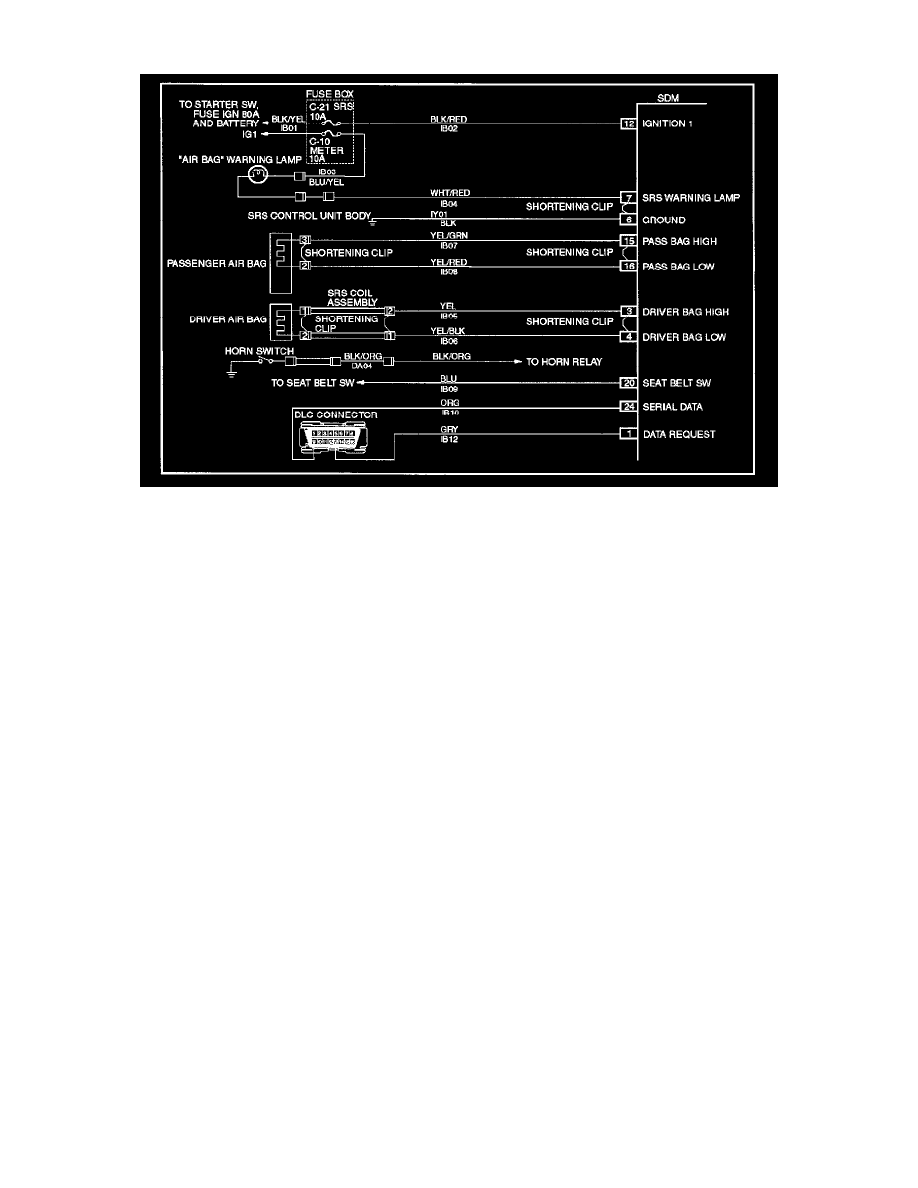Trooper LS 2WD V6-3.5L (2001)

Sensing And Diagnostic Module: Component Tests and General Diagnostics
Circuit Description:
When the SDM recognizes "Ignition 1" voltage, applied to terminals "12", is greater than 9 volts, the "AIR BAG" warning lamp is flashed 7 times to
verify operation. At this time the SDM performs "Turn-ON" tests followed by "Continuous Monitoring" tests. When a malfunction is detected, the
SDM sets a current diagnostic trouble code and illuminates the "AIR BAG" warning lamp. The SDM will clear current diagnostic trouble codes and
move them to a history file when the malfunction is no longer detected and/or the ignition switch is cycled, except for DTCs 19,25,51,53 and 71. DTC
71 can only be cleared using a scan tool "Clear Codes" command. If DTCs 51, 53 are not indicated then DTC 71 is not existing. DTCs 51, 53 and 71 can
not be cleared after a "Clear Codes" command is issued.
Chart Test Description:
Number(s) below refer to step number(s) on the diagnostic chart:
1. This test confirms a current malfunction. If no current malfunction is occurring (history DTC set) the "Diagnostic Aids" for the appropriate
diagnostic trouble code should be referenced. The SDM should not be replaced for a history diagnostic trouble code.
2. This test checks for a malfunction introduced into the SRS during the diagnostic process. It is extremely unlikely that a malfunctioning SDM
would cause a new malfunction to occur during the diagnostic process.
3. When all circuitry outside the SDM has been found to operate properly, as indicated by the appropriate diagnostic chart, then and only then should
the SDM be replaced.
WARNING: DURING SERVICE PROCEDURES. BE VERY CAREFUL WHEN HANDLING A SENSING AND DIAGNOSTIC MODULE
(SDM). NEVER STRIKE OR JAR THE SDM. NEVER POWER UP THE SRS WHEN THE SDM IS NOT RIGIDLY ATTACHED TO THE
VEHICLE. ALL SDM AND MOUNTING BRACKET FASTENERS MUST BE CAREFULLY TORQUED AND THE ARROW MUST BE
POINTING TOWARD THE FRONT OF THE VEHICLE TO ENSURE PROPER OPERATION OF THE SRS. THE SDM COULD BE
ACTIVATED WHEN POWERED WHILE NOT RIGIDLY ATTACHED TO THE VEHICLE WHICH COULD CAUSE DEPLOYMENT
AND RESULT IN PERSONAL INJURY.
